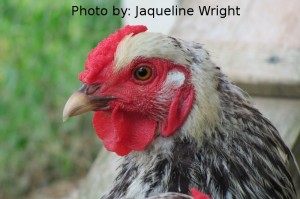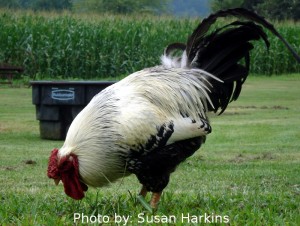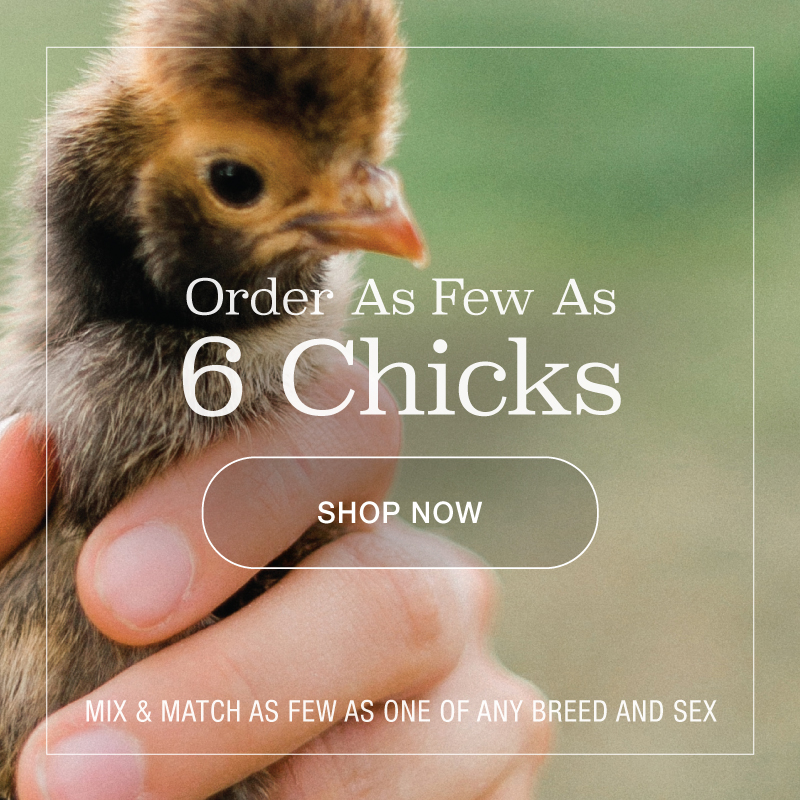History
Wyandottes were developed in the United States in New York state. They get their name from a Native American tribe known as the Wyandots (or Wendats). The original Wyandotte was the Silver Laced Wynadotte, which was first accepted into the Standard of Perfection in 1883. Other Wyandottes were developed from the Silver Laced Wyandotte by crossing it with other breeds.
Qualities of the Wyandotte
Wyandottes are an excellent dual-purpose bird, which can be raised to produce both eggs and meat. They are particularly well-suited for regions that have cold winters.
- Egg Laying — Wyandottes are good layers of light to rich brown eggs and are good winter layers.
- Hardy — The rose comb, plumage, and good body size of the Wyandotte make it well suited to cold climates.
- Temperament – Wyandottes are generally docile and friendly, but some individuals can be aggressive
- Adaptability – Wyandottes tolerate confinement well, and they also are good foragers, which makes them well suited for free ranging.
Wyandottes will occasionally set, but they are not as likely to go broody as Silkies or Buff Orpingtons.
Physical Characteristics
- Feathers – Wyandottes are available in many colors and color patterns. Their legs are not feathered.
- Comb – Wyandottes have a rose comb.
- Wattles – Well-rounded, moderately long, and bright red.
- Earlobes – Oblong, smooth, and well-defined.
Videos of Baby Wyandotte Chicks
httpv://www.youtube.com/watch?v=qCYVgkfcB0E
httpv://www.youtube.com/watch?v=7foa7Iwg6eU
httpv://www.youtube.com/watch?v=ftCAFe8XTGU
Availability
- Silver Laced Wyandottes
- Blue Laced Red Wyandottes
- Columbian Wyandottes
- White Wyandottes
- Golden Laced Wyandottes
- Silver Penciled Wyandottes
Bantam varieties of Wyandottes, such as the Bantam Partridge Wyandottes are also available.
Feedback
Do you raise Wyandottes? Which varieties? Have you raised them for eggs, for meat, or both? What has your experience with them been?






We went with the Silver Laced Wyandottes for our second flock. They are very savvy foragers and quite curious when free ranging. Slightly more aggressive than our first flock (Red Stars), we have to make sure they get a LOT of free range time. Even in the winter they are outside and trudging through the snow–even the 100″+ we had this season. They didn’t start laying until December, at seven months old (though we actually prefer that as they are very healthy birds). However, they are good layers at 18-21 eggs a day from our 22 hens (we also have three Cuckoo Marans and one EE). Eggs are now reliably size large.
The Wyandottes are by far my favorite breed of chicken. I had Silver Laced to begin with, and last year I bought a few Blue Laced Red Wyandottes chicks from McMurray and ended up with one hen. She is docile with an easy going temperament. She is a good layer, although not as good as our Rhode Island Reds, which is to be expected. She is the prettiest bird we have ever had. She went broody and hatched eggs a few days ago and is an excellent mother. I ordered some more BLRW this year. I am hooked!
Looking forward to chicks arriving. Had Columbian Wyandotte hatchery flocks and enjoyed working with Murray McMurray Hatchery. Ordered Bantams this year for 4-H show projects.
I just recieved 12 along with 24 red stars. I got them for free, as someone decided they didn’t like raising chickens. They are almost four months old and seem a bit small, but have grown tremendously since I got them. I’m hoping that they help me keep up with the huge egg demand I have. My husband drops eggs off daily, so everyone knows when their eggs were layed. The Wyandottes are very quite, but then again so are the Red Stars right now. They were never outside of the shed she kept them in. So now that they are at our farm they are learning about the great outdoors. I’m looking forward to the day they start jumping the fence and really begin exploring! Chickens sure keep the bugs down in the horse yard! Now if I could just convince them to use all the other nest boxes and not fight over one we would be in business. We just received our 25 rainbow layers that we ordered before the unexpected 36, and I bet we have some Wyandottes in the bunch. At least we are hoping. We don’t even mind any extra roos as we separate them out into small family units. I think our Lakevelder has his eye on a few of the Silver Laced Wyandottes, but that will depend on whether his “Queen”, one of last years RIR, will allow them in.
We live in an exurb and have a flock of 7, two of which are Wyandottes. Lacey, our Silver-Laced, is shy and the most vocal of the bunch (she has an opinion on everything-LOL), while Wynona, our golden-laced, is the friendliest though not quite as friendly as our Rhodies. Both are great layers even during our cold MN winters. We will definitely get more Wyandottes in the future!
I live in northern Wisconsin and have one Golden-laced Wyandotte in my flock. I will get more because, since they were originally bred in Wisconsin, my Golden thrives in our cold winters. She keeps laying, and she’s the first one out of the gate to forage. Plus, she’s beautiful with a great temperament.
We started with 4 Silver Laced Wyandottes in our flock. Two were killed by stray dogs. Our third was a beautiful bird, and she became our flock leader. Her name was Chaser, and she was a cool customer. What I did find with our Wyandottes is they have a tendency toward domination. In our mixed flock that also includes Barred Rocks, Leghorns and a Partridge Cochin, that created a few squabbles. Our fourth Wyandotte is still with us. I recently wrote about her and this breed in general in my blog at pamsbackyardchickens.blogspot.com.
I have just one Silver Laced in our urban backyard “flock” of 5. Sylvia lays everyday and seems to be the most talkative of the others that are all different breeds. She does indeed to a good job of foraging, but her eggs are the smallest of the group.
We started off with Blue Lace Red Wyandottes and absolutely loved them. Unfortunately, nesting bald eagles wiped out all but one pullet from our original flock, and I was only able to get one other pullet and 3 other chicks that turned out to be roosters. We butchered two of the roosters simply because we couldn’t have so many roos in the flock, but they were handsome, good-natured animals. Our remaining Blue Laced Reds are my favorite chickens from our flock (we also have Buff Orpingtons, Black Australorps, and Plymouth Barred Rocks).
Thanks for this entry. I have a few of this breed and look forward to getting some more. I was particularly interested in the dual purpose aspect so that when they slow down on their laying they are good for eating as well. Nice.